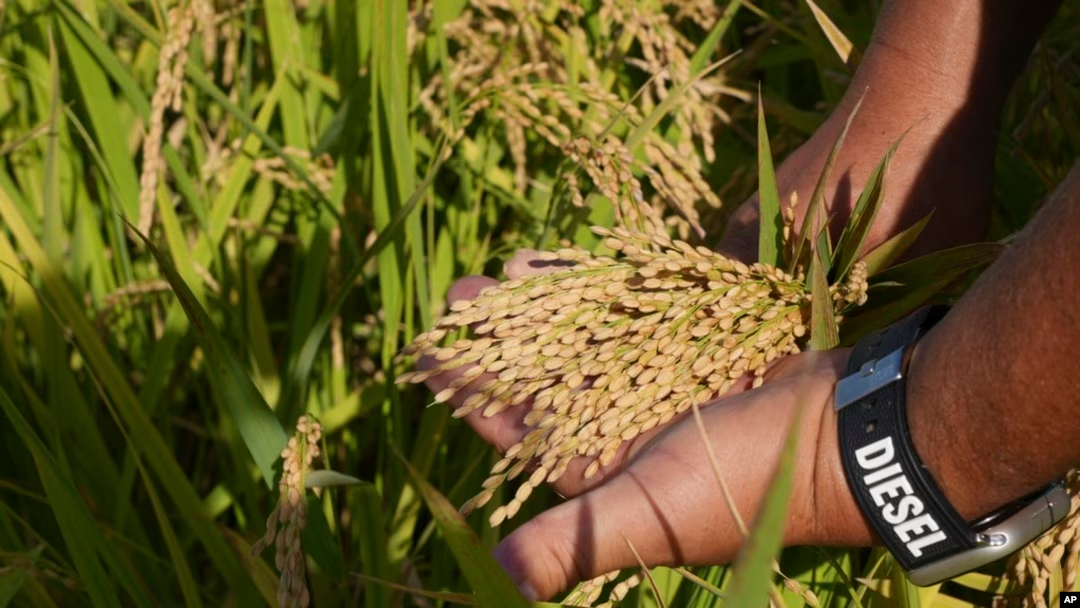
Tokyo, July 9 (Jiji Press) — Japan’s Ministry of Agriculture announced Wednesday that it expects “frequent” outbreaks of stink bug species known to damage rice crops in many regions across the country.
According to the ministry’s pest outbreak alert, these stink bugs are likely to appear in several areas, including Hokkaido (Japan’s northernmost prefecture), the southern parts of the Tohoku and Kanto regions, as well as the Hokuriku, Tokai, and Chugoku regions.
Last year, rice stink bug infestations were reported in 37 prefectures, resulting in reduced crop yields in some locations. Similar impacts are anticipated this year.
The ministry also predicts “somewhat frequent” outbreaks in northern Tohoku, the Kinki and Shikoku regions, and the Kyushu region in the southwest.
Farmers are being urged to take swift measures, such as extermination, to control the pests. The ministry warns that ongoing high temperatures could lead to more widespread and prolonged infestations..
Key Terms and Concepts
What are stink bugs and why are they a threat to rice crops?
Stink bugs are agricultural pests that feed on rice grains, preventing the plants from developing properly. Their feeding damages the rice kernels, reducing both yield and quality. In Japan, certain species like Leptocorisa chinensis are especially harmful to rice fields during the summer growing season.
How does climate change affect pest outbreaks in agriculture?
Warmer temperatures and prolonged heat waves — increasingly common due to climate change — accelerate pest reproduction and extend their breeding seasons. In 2025, such conditions have been linked to a higher risk of frequent and prolonged stink bug infestations across Japan.
What is Japan’s Ministry of Agriculture, Forestry and Fisheries (MAFF)?
MAFF is the government body responsible for policies related to farming, food, and rural development. In this context, MAFF issues pest alerts and provides guidelines to protect crops from insects like stink bugs. Its updates are critical for farmers and local agricultural offices.
What regions of Japan are most affected by the stink bug warning in 2025?
In 2025, the agriculture ministry has flagged several regions for expected stink bug outbreaks, including Hokkaido, southern Tohoku, Kanto, Hokuriku, Tokai, Chugoku, Kinki, Shikoku, and Kyushu. These are key rice-growing areas and any infestations could significantly impact the national rice supply.
How does pest damage affect Japan’s food security and rice economy?
Rice is a staple food in Japan, and pest damage can lead to reduced production, higher prices, and increased reliance on imports. Protecting rice crops is essential to food security, particularly in 2025 as global food supply chains face pressure from climate extremes and geopolitical factors.
What are agricultural pest outbreak alerts and how do they work?
These alerts are issued by government agencies to inform farmers about expected pest activity. Based on field data, weather patterns, and pest population models, alerts like the one from MAFF in July 2025 help farmers prepare timely countermeasures like insecticide use and crop monitoring.
How does prolonged heat in Japan contribute to agricultural problems in 2025?
The summer of 2025 has seen above-average temperatures in Japan, which accelerates the development and spread of pests like stink bugs. Heat stress also weakens plants, making them more vulnerable to damage and reducing their ability to recover from infestations.
What are common methods for controlling stink bugs in rice fields?
Farmers use integrated pest management (IPM) techniques, including insecticides, field monitoring, and natural predators to control stink bug populations. The MAFF urges early intervention in 2025 to prevent severe outbreaks, especially as traditional methods may be less effective during heatwaves.
What financial support is available to Japanese farmers affected by pests in 2025?
In 2025, Japan provides agricultural subsidies, crop insurance, and low-interest loans to support farmers dealing with crop losses. If stink bug damage worsens, affected farmers may seek government compensation or pest control grants under emergency response programs.
What is the economic significance of rice production in Japan today?
Rice remains one of Japan’s most important crops both culturally and economically. Though consumption has declined, domestic production ensures food independence. Pest threats like those in 2025 put pressure on this vital sector, prompting policy responses and farmer support initiatives.






Start profiting from your traffic—sign up today! https://shorturl.fm/k5Fqg